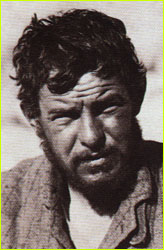
|
 |
 |
by Graham Hoyland I met my great-uncle T. Howard Somervell when I was twelve. At the time, he didn't seem a particularly remarkable man. True, he had nearly climbed Mount Everest in 1924 and had been a close personal friend of the legendary George Mallory, but he seemed quite normal. Not to mention alive. I was too taken up with the glamorous—and dead—Mallory to take enough notice of the man in front of me. But age has its advantages, and one of them is the ability to see more clearly. Now I can see that I was in the presence of an extraordinary man. He was a true polymath, a Renaissance man. Not only was he an accomplished artist—his watercolors graced the 1924 expedition book, and hang on the walls of the Alpine Club in London—but he was also a musician. He transposed the Tibetan folk-tunes he heard on his way to Everest in 1922 and 1924 into Western notation, so that they could be played against the silent films of the two expeditions. During the First World War he experienced the appalling losses of that era as a surgeon. His descriptions in After Everest of mile-long queues of dying young men will stay in my mind forever. And it was as a surgeon that he gave his life's work to India. After the 1922 trip to Everest, while racked with guilt about seven Sherpas dying in an accident on the North Col, he was invited to a medical missionary hospital in Travancore. What he saw made him decide to work there for the rest of his life to alleviate the suffering of India's masses. This was at a time when he had just been offered a more worldly man's choice—a prestigious position as consultant surgeon in London: Obviously it was his Evangelical Christian faith that informed this choice.
Back to The Mystery of Mallory & Irvine '24 Photo: Courtesy of the John Noel Photographic Collection. Lost on Everest | High Exposure | Climb | History & Culture | Earth, Wind, & Ice E-mail | Previous Expeditions | Resources | Site Map | Everest Home Editor's Picks | Previous Sites | Join Us/E-mail | TV/Web Schedule About NOVA | Teachers | Site Map | Shop | Jobs | Search | To print PBS Online | NOVA Online | WGBH © | Updated November 2000 |
 T. Howard Somervell
T. Howard Somervell
